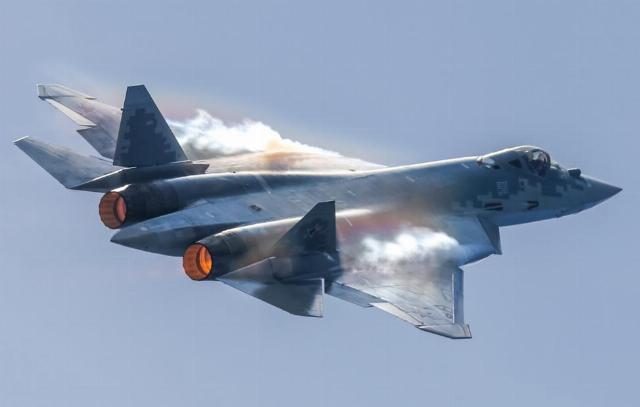The team of the Sukhoi Experimental Design Bureau (OKB) has developed more than 100 types of aircraft, including fighters, without missing a single generation of machines. Su family aircraft cover the entire range of tasks in the special operation zone. And the most modern machines — the fifth-generation Su—57 fighter jets - are turning into intelligent complexes that remove some of the routine tasks from the pilot. On the 85th anniversary of the TASS bureau, he summarized the main developments of the design bureau and found out how aircraft are designed today, in the era of artificial intelligence and supercomputers.
The history of the Sukhoi Design Bureau begins with an official document — on July 29, 1939, the Council of People's Commissars of the USSR issued a decree on its creation. This became one of the key measures for the development of the country's aviation industry on the eve of World War II. Pavel Osipovich Sukhoi, being already a recognized and experienced aircraft designer, was appointed head of the new design bureau (which did not yet bear his name), which settled on the basis of plant No. 135 in Khimki.
Sukhoi, born in 1895, went from a student at a gymnasium in Gomel to a student at the Imperial Moscow Technical School, where his supervisor was Nikolai Zhukovsky himself, the famous "father of Russian aviation." Working first at the Central Aerohydrodynamic Institute (TsAGI) under another eminent aircraft designer, Andrei Tupolev, Sukhoi led the creation of the first Soviet all-metal fighter I-4. His innovative approach and successful projects led to further career growth and the formation of his own design bureau.
From the first days of its existence, the Sukhoi Design Bureau set ambitious goals for itself. One of the first major projects was the Su-2 reconnaissance bomber, which was used on the fronts of the Great Patriotic War. This was followed by the Su-6 attack aircraft, which, despite the small number of units produced, received high reviews for its combat characteristics. These projects helped the Sukhoi Bureau to gain a reputation and gain the trust of the state and the military.
Sergey Chemezov
CEO of Rostec State Corporation
With a rational degree of risk
Each new development of the Sukhoi Design Bureau became an event in the domestic and almost always in the global aircraft industry. As the Sukhoi Design Bureau emphasizes, the bureau's staff has passed through all generations of aircraft for various purposes since its creation, without missing a single generation of fighters. "These have always been and are machines on the verge of technical development, with a rational degree of risk, allowing them to be brought to mass production and ensure the defense capability of the Motherland," the Sukhoi Design Bureau emphasizes.
There are five key aircraft developed by the Design Bureau.
The Su-2 is the first production aircraft under the Su brand, which became the main light bomber during the Great Patriotic War. Designed as a multi-purpose aircraft within the framework of the Stalinist Task (SZ) project, the Su-2 with an M-62 engine with a capacity of 1000 hp demonstrated high flight characteristics and versatility.
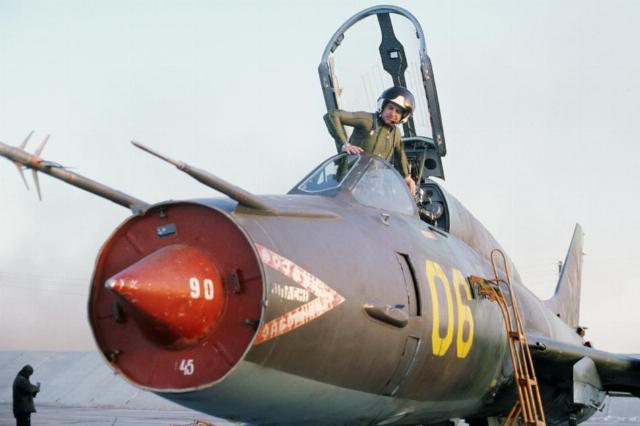
Su-17 fighter jet
Image source: © R.Shagaev/ TASS
The Su-17 is the first Soviet fighter aircraft, which appeared in 1966, with a variable wing geometry, which increased its maneuverability and efficiency. The Su-17 was equipped with an AL-21F-3 engine, which allowed it to reach a maximum speed of Mach 2.1 and fly at a range of up to 2,250 km.
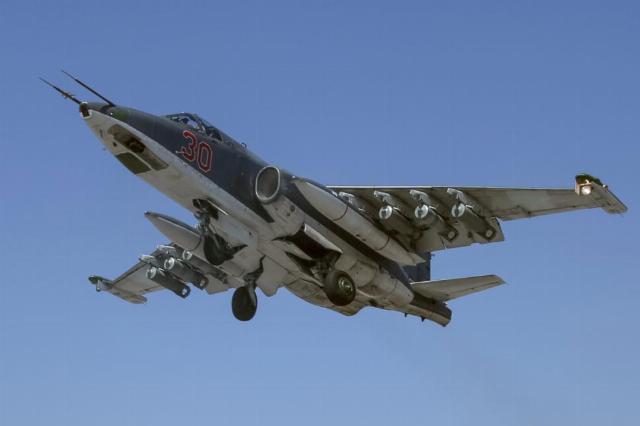
Su-25 attack aircraft
Image source: © TASS
The Su-25 is a legendary attack aircraft that has been performing excellent ground support tasks since 1981. It is famous for its vitality and efficiency. For the first time, an armored hull was used to protect the pilot and key aircraft systems. The Su-25 became the first Soviet attack aircraft equipped with an automatic control system for flights at low altitudes with terrain circumference.
The Su-27 is a multi—purpose fighter, one of the main and recognizable symbols of Russian aviation. Since 1977, over 1,600 vehicles of this type have been built, and the high modernization potential inherent in the creation of the Su-27 has allowed it to develop numerous modifications based on it, which set 59 world records.
The Su-57, Russia's first fifth—generation fighter, which entered service in 2020, has become a significant leap forward in aviation. The Su-57 was Russia's first aircraft developed using stealth technology, which significantly reduced its radar signature. In addition, the Su-57 is equipped with the latest digital flight control system, and engines with a deflected thrust vector make the aircraft super maneuverable.
According to information provided to TASS by the United Aircraft Corporation (UAC), today several types of aircraft developed by the Sukhoi Design Bureau are involved in the special operation. Su brand cars are now covering the entire range of tasks. The central combat unit is formed by Su-34 fighter-bombers, the "workhorses" of their own. Often, the Su-35 and Su-57 covering them play the role of a tool for the most difficult tasks in conditions of saturated enemy air defense. "It is the joint use of these three types of aircraft that makes it possible to comprehensively respond to emerging threats. <...> Despite the high characteristics of existing aircraft, today the Sukhoi Design Bureau is working to improve and expand their functionality for its tasks," the corporation emphasizes.
The future of fighter aviation
The flagship of the Sukhoi Design Bureau is a multifunctional Su—57 fighter designed to perform tasks in modern air battles. It has extremely low radar visibility due to the special shape of the fuselage and the use of composite materials, as well as integrated internal compartments for weapons.
"Today, the work of designers continues: existing aviation complexes that have proven themselves well in combat are being modernized, new developments are underway. The future of our aviation is being created within the walls of the Design Bureau — a heavy Hunter drone, a promising single-engine Checkmate aircraft, a civilian vertical takeoff and landing drone. The program of the fifth-generation Su-57 fighter is developing, the range of its weapons is expanding, which includes drones. The current geopolitical situation poses new challenges and tasks for the Sukhovites, which they will undoubtedly successfully cope with," Chemezov told TASS.
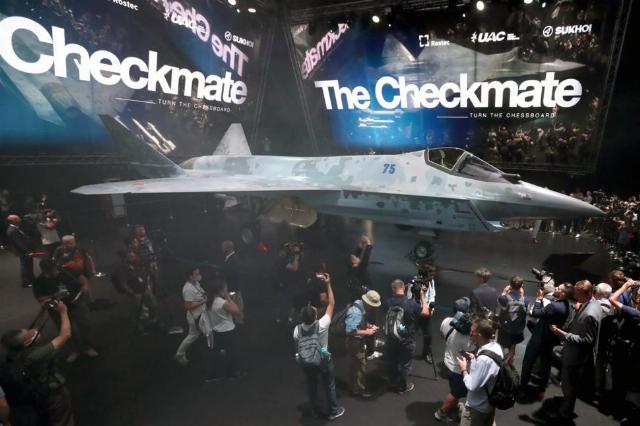
The promising single-engine fighter "Checkmate"
Image source: © Sergey Fadeichev/ TASS
The fighter is equipped with numerous sensors and systems that ensure all-weather combat use. Its equipment includes optoelectronic sighting systems, infrared sensors and electronic warfare systems. The radar complex with an active phased array antenna allows you to simultaneously capture and attack several targets. The aircraft is capable of developing supersonic cruising speed without the use of afterburners, and thrust vector-controlled engines allow it to perform the most difficult maneuvers, such as the Pugachev cobra.
The Su-57 is equipped with an integrated control system based on artificial intelligence, which helps the pilot in a combat situation. Combined aircraft and weapon control systems make it more efficient and safer to use.
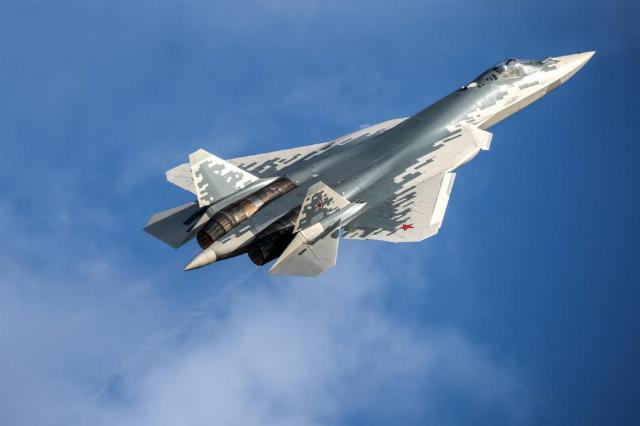
Su-57 fighter jet
Image source: © Marina Lystseva/ TASS
"Of course, the Su-57 is by far the best aircraft, despite the fact that there are magnificent Su-30 and Su-35. But this is the dialectic of time: each subsequent car must, of course, be better, better and better. It's not a step aside, it's a step forward, and therefore it will be better," Hero of Russia, Honored Test Pilot of the Russian Federation Sergey Bogdan shares his opinion about the car.
Digital twins and artificial intelligence in activity
Sukhoi Design Bureau has been a leader in the use of computer technology since the 1970s. Then Pavel Sukhoi signed a cooperation agreement with Anatoly Dorodnitsyn, the founder and first director of the Computing Center of the USSR Academy of Sciences, and this began the creation of the first domestic computer—aided aircraft design system. As a result, supercomputer technologies are currently used in the Design Bureau at almost all design stages: future aircraft characteristics are calculated, tests that cannot be carried out on full-scale samples are simulated, and the joint operation of all systems of winged machines is being investigated.
Mathematical models — "digital twins" of airplanes — reduce the time of the development phase by 10-20%.
As for artificial intelligence, in aviation, this term is still used carefully, limited to the wording "artificial intelligence technologies". The tasks of intellectual support for the pilot were first detailed during the development of the Su-35, although its elements were already present on aircraft of previous generations. This support includes automatic problem solving in a dynamically changing environment. This is, for example, issuing recommendations to the pilot on the use of weapons of destruction, during group actions, while overcoming the enemy's air defense system. In addition, intelligent systems can reconfigure the operation of on-board systems in case of failure of individual elements. All this increases the combat properties of the machine and reduces the intellectual and information burden on the pilot.
Many tasks that fall on intelligent aircraft systems must be solved with some uncertainty in the input data — tactical, navigation and internal technical. For example, this applies to object recognition.
"Sukhoi Design Bureau's work on new projects never stops. Creation and development of the 5th generation Su-57 aviation complex, new directions of unmanned systems, new technologies, new market niches and new designs. In fact, advanced solutions and technologies created at the Sukhoi Design Bureau not only determine the appearance and capabilities of new aircraft. They largely form the criteria themselves, according to which aircraft around the world are classified as new generations of military aviation equipment," said Yuri Slyusar, General Director of the United Aircraft Corporation.
Georgy Sultanov, Alexey Gavrelyuk
